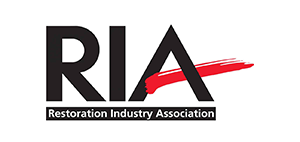What’s the hidden danger in your walls that could cost you thousands? Fire and theft get all the attention, but water damage is a bigger threat. Homeowners face a seven times higher risk of plumbing leaks than fires, yet only 17% worry about non-weather water damage.
Water damage can quickly turn into a big problem, leading to huge insurance claims every year. Mold and mildew can spread fast, causing health issues and damage. Uncontrolled water sources like gray and black water make things even worse, posing serious health risks and making places unusable.
The costs are huge, with repair bills ranging from $1,000 to $8,000. Mold cleanup can add another $500 to $6,000. It’s crucial to tackle these issues early to avoid bigger financial losses and damage.
Key Takeaways
- Water damage is more likely than fire damage but is often underestimated by homeowners.
- Mold and mildew growth can start within 24-48 hours on damp surfaces.
- Repair costs for water damage can range from $1,000 to $8,000, with mold remediation adding up to $6,000.
- Preventive measures like installing water pressure regulators can cost $1,500 or less.
- Immediate response to water leaks can minimize damage and costs, often necessitating professional restoration services.
Understanding the Biggest Concerns with Water Damage
Water damage costs the U.S. between $13 billion and $17 billion each year. It affects about 14,000 people every day. The first signs, like stains and dampness, show only the beginning of the problem.
Mold growth is a big worry from water damage. It can start in 24 to 48 hours, posing health risks, especially for those with breathing problems. Quick cleanup is key to avoid health issues.
Moisture can also harm a building’s structure. It can cause floors to crack, wood to rot, and masonry to erode. Ignoring these problems can lead to expensive fixes and lower property value, sometimes by 30%.
Water damage also attracts pests like cockroaches and beetles. These pests damage structures and threaten health. Seeing more insects could mean water damage needs fixing fast.
Fixing water damage costs a lot. Restoration can cost between $1,500 and $3,000, but more serious damage can be even pricier. For businesses, 30% may never reopen after a disaster. Regular upkeep can prevent up to 93% of damage.
Ignoring water damage signs can lead to big problems. Mold, pests, and financial losses are all risks. Homeowners and businesses must stay alert to manage these risks well.
What is the Biggest Concern with Water Damage?
Water damage can harm both health and property. Mold and mildew can grow quickly on damp surfaces. This can be bad for people with breathing problems or allergies.
Ignoring water damage can lead to electrical problems and fires. Moisture can also damage paint, surfaces, and building structures. Wooden floors may warp or rot, while concrete can crack.
Water damage can attract pests and lower property value. Gray water from appliances can be unhealthy, and black water is even more dangerous. It’s crucial to fix water damage quickly.
Experts use special methods to dry out damaged areas. They remove water, improve airflow, and reduce humidity. Regular checks and maintenance can also help avoid damage.
Water damage is a big problem, causing nearly 40% of real estate losses. It’s vital to act fast when water damage happens. Quick action and the right restoration can make a big difference.
Mitigation and Prevention Strategies
Water damage is a big problem, costing over $13 billion a year in the U.S. It’s important for property owners to know how to prevent it. Regular checks and upkeep of water systems can lower the risk of expensive repairs. Using leak detection systems can cut claims by 75%, saving companies a lot of money.
Homeowners need to take steps to prevent water damage. Water tanks usually last about 10 years, so regular checks are key. Smart homes with water sensors can alert you to leaks, saving you around $5,000 per leak. Also, keeping water away from your home’s foundation can cut seepage risks by 30%.
Understanding your water damage insurance is crucial. Most policies don’t cover all types of water damage. Higher deductibles can mean you pay more for repairs. It’s important to document damage well, with photos and videos, to help with claims.
The Federal Emergency Management Agency (FEMA) says quick action can save a lot of money and time. Using fans and dehumidifiers after water is key to stop mold. Having a plan can cut response time by 50%, reducing damage.
Keeping up with maintenance and fixing problems fast is key, says the Insurance Institute for Business & Home Safety (IBHS). Leak detection technology can cut water damage by 60% over time. These steps protect your property and save money on insurance claims.
Conclusion
Understanding water damage is key. Property owners need to know that signs of water damage can grow fast. Mold can start in just 24 hours, and ignoring it can cost a lot.
Water damage is a big problem in the US, second only to fire damage. Even small issues can lead to big repairs, costing thousands. It can also make your home less energy-efficient, raise your bills, and lower your home’s value.
Acting fast is crucial to keep your home safe and healthy. You should remove water quickly, use strong dehumidifiers, and treat for microbes. Knowing the signs early and taking steps to prevent damage is important. This way, you can avoid the high costs and health risks of water damage.




















